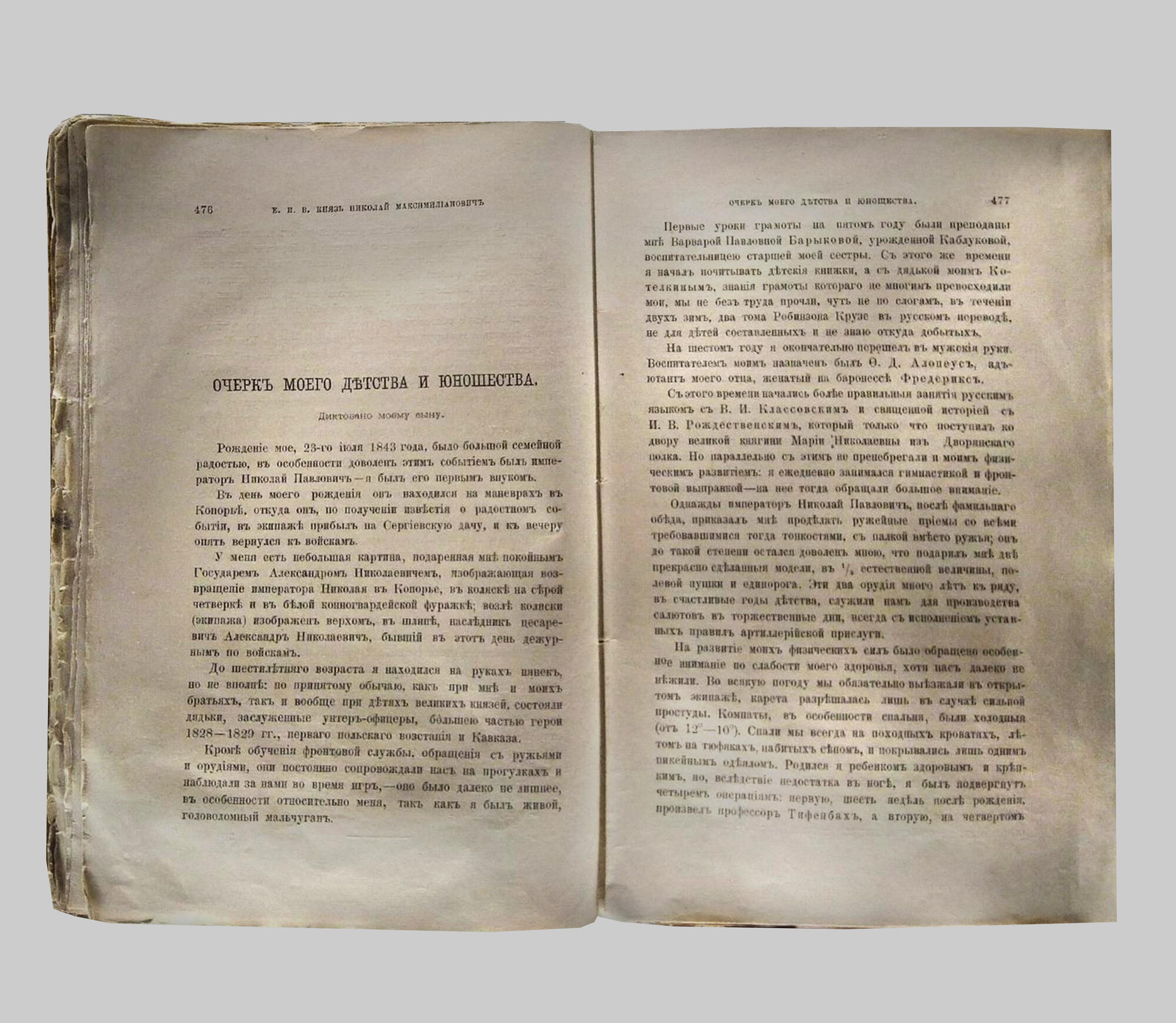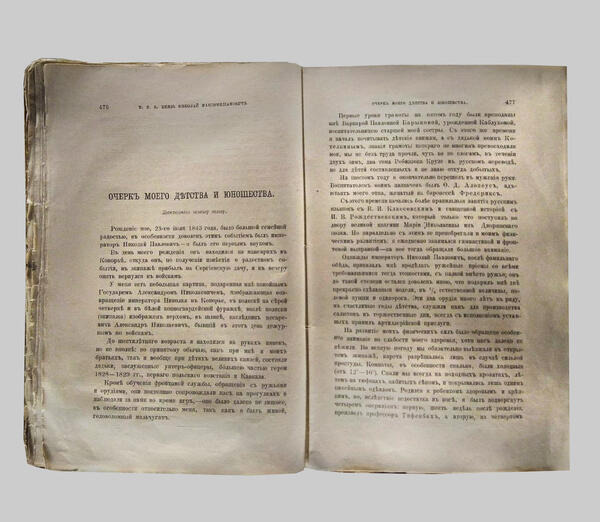Russkaya Starina is a monthly historical magazine published in St. Petersburg in 1870-1918. It was founded, published and edited until 1892 by the historian, journalist and public figure Mikhail Semevsky. his brother, the historian Vasily Semevsky, helped him with that. The subsequent editors of the magazine after the death of Mikhail Semevsky included military historians Nikolay Shilder, Nikolay Dubrovin, Sergey Zykov, and Pavel Voronov.
The content of the Russkaya Starina was very diverse. The main purpose of the magazine was to assist in the study of Russian history, starting from Peter I, but it also published research from the history of Russia before Peter I. Along with works of historical and historical-literary nature, the editors also included in the publication many literary texts, epistolary, memoir and departmental documentary materials.
Mikhail Semevsky managed to collect many stories and memoirs of individuals. Many of the notes were drawn up solely at his insistence, some stories were recorded or stenographed by the editors and then placed on the pages of the magazine with the consent of persons who provided that data. Sometimes such notes were drawn up by the editorial office itself using various materials: in that case, they were sent for review and approval before printing to those people on whose behalf they were to be published. Mikhail Semevsky was a typical editor-collector in that regard and carefully and skillfully searched for interesting materials everywhere.
In the ‘Russkaya Starina’, in contrast to other magazines, the historical theme was significantly expanded and included culture, art, history of the liberation movement. Because of the last of the topics, the issues of the magazine were watched especially closely by censors. The diary of Wilhelm Kuchelbecker, a chapter from an article about Aleksandr Bulatov (for ‘praising the Decembrists’), and a biography of Nikolay Chernyshevsky were banned for publication. Sometimes, for censorship reasons, publications were issued with cuts. Mikhail Semevsky selected such materials that were not republished, were not previously passed by censors, and strove for a complete and accurate reproduction of texts.
The content of the Russkaya Starina was very diverse. The main purpose of the magazine was to assist in the study of Russian history, starting from Peter I, but it also published research from the history of Russia before Peter I. Along with works of historical and historical-literary nature, the editors also included in the publication many literary texts, epistolary, memoir and departmental documentary materials.
Mikhail Semevsky managed to collect many stories and memoirs of individuals. Many of the notes were drawn up solely at his insistence, some stories were recorded or stenographed by the editors and then placed on the pages of the magazine with the consent of persons who provided that data. Sometimes such notes were drawn up by the editorial office itself using various materials: in that case, they were sent for review and approval before printing to those people on whose behalf they were to be published. Mikhail Semevsky was a typical editor-collector in that regard and carefully and skillfully searched for interesting materials everywhere.
In the ‘Russkaya Starina’, in contrast to other magazines, the historical theme was significantly expanded and included culture, art, history of the liberation movement. Because of the last of the topics, the issues of the magazine were watched especially closely by censors. The diary of Wilhelm Kuchelbecker, a chapter from an article about Aleksandr Bulatov (for ‘praising the Decembrists’), and a biography of Nikolay Chernyshevsky were banned for publication. Sometimes, for censorship reasons, publications were issued with cuts. Mikhail Semevsky selected such materials that were not republished, were not previously passed by censors, and strove for a complete and accurate reproduction of texts.



